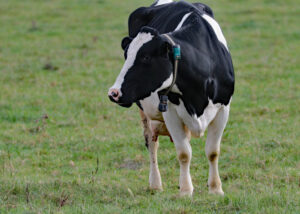Lucas Pantaleon
A major negative economic impact for cattle operations is due to respiratory tract infections (RTI) and their clinical manifestation bovine respiratory disease (BRD). This disease is caused by the complex interaction of viral and bacterial pathogens along with environmental and host factors that negatively affect the cattle’s respiratory defense mechanisms or stimulate the pathogen’s spread.
Antibiotic drugs are commonly prescribed for the treatment or prevention of BRD, therefore improving prevention and control of this disease complex will be a key tool to improve the use of antibiotics in cattle.
In an increasing number of European countries, in order to justify antibiotic use and customize prevention and control measures, respiratory tract sampling for BRD affected cattle is recommended. Samples are submitted for bacterial culture and sensitivity as well as PCR testing.
PCR testing is increasingly popular among veterinarians as it can test for different microorganisms, it is highly sensitive and allows for pooling samples in order to make group diagnosis. Some disadvantages of PCR testing are the lack of antibiotic susceptibility testing and difficulty of the interpretation of opportunistic pathogens.
The objective of the study conducted in Belgium (Pardon et al., 2020) was to identify at the herd level pathogen-specific risk factors associated with epidemic BRD in calves. This cross-sectional study was conducted during two winter seasons, in beef and dairy herds from Belgium. Samples from 128 outbreaks were analyzed by the laboratory during the study period. Respiratory fluid from 5 samples were pooled to be analyzed for respiratory pathogens. The potential risk factors were collected via questionnaire and a national database.
This Belgium study outlined the prevalence of pathogens involved and potentially involved with epidemic RTI in cattle. The study demonstrated that epidemic RTI peaks during the winter months and is primarily of viral origin.
Bovine coronavirus plays a primary role in bovine respiratory disease
The most commonly isolated pathogen in this study was bovine coronavirus (BCV), followed by bovine respiratory syncytial virus (bRSV). BCV has been recognized as playing a primary role in BRD, the virus is considered an initiator of secondary infections. This was likely supported by the association between BCV and M. haemolytica and H. somni in the present and other studies.
In contrast to North America, there is no licensed coronavirus vaccine within the European Union, hence biosecurity is a paramount set of measures that need to be put in place to control the disease. Researchers in this study demonstrated the strict seasonal distribution of bRSV, that is the virus was detected between November and April with a peak detection during the month of December. Interestingly this distribution pattern of the bRSV mimicked the behavior of human syncytial viruses.
M. haemolytica, was detected in conjunction with BCV, highlighting the potential significance of co-infections with these two pathogens. Also the bacteria was more prevalent in herds with larger groups of calves (more than 5 per pen). The type of housing, sawdust bedding, also appeared to be a risk factor for M. haemolytica and H. somni.
Another interesting observation of this research was the lack of association between vaccination and lower detection of pathogens via PCR testing. The likely explanation for this phenomenon is the fact that most vaccines do not prevent infection but lower the amount of shedding and the severity of clinical signs.
Reference
Pardon, J. Callens, J. Maris, L. Allais, W. Van Praet, P. Deprez, and S. Ribbens. 2020. Pathogen-specific risk factors in acute outbreaks of respiratory disease in calves. J. Dairy Sci. 103:2556–2566.
© 2021 Dellait Dairy Knowledge Center. All Rights Reserved.











